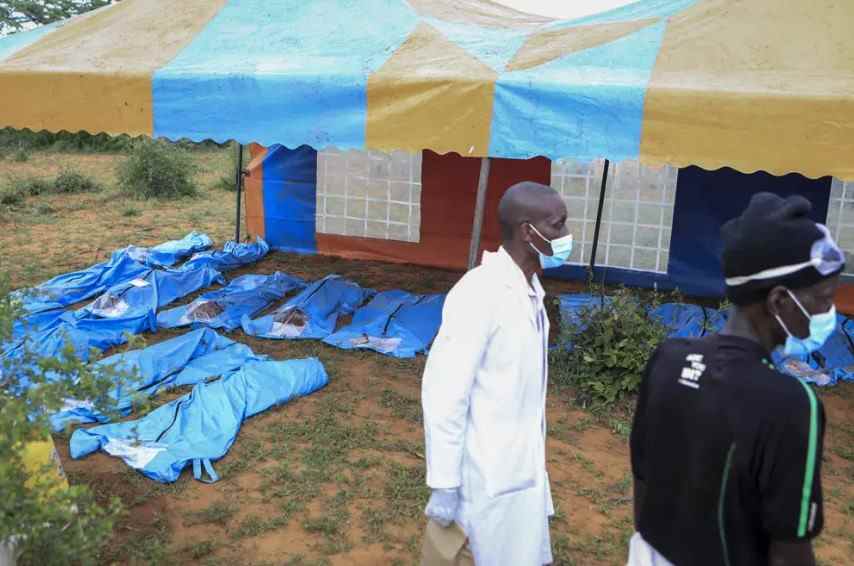The discovery of 47 bodies, so far, in a forest in eastern Kenya has shocked the nation as authorities continue to search for more victims and possible survivors. The corpses are believed to be linked to the Good News International Church, a cult-like movement led by Makenzie Nthenge. The leader reportedly urged his followers to starve themselves in order to “meet Jesus.”
Specialized search teams, donning protective gear, have been working tirelessly at the site near the coastal town of Malindi, looking for more bodies and potential survivors. The 800-acre forest of Shakahola remains sealed off for the operation. Charles Kamau, the head of criminal investigations in Malindi, has confirmed the ongoing search for both bodies and survivors and emphasized the gravity of the situation.
The gruesome discoveries prompted Interior Minister Kithure Kindiki to announce plans to visit the site on Tuesday, initiating a full-scale investigation into the Good News International Church. Police have arrested Nthenge and six of his followers so far. Nthenge turned himself in last month after being charged in connection with the deaths of two children who starved to death in their parents’ custody.
Local media reports indicate that Nthenge refused to eat or drink while in police custody. Despite strong opposition from local politicians, Nthenge was released on bail of 100,000 Kenyan shillings ($700). Authorities initially raided Nthenge’s property in Malindi after receiving a tipoff, finding 15 emaciated individuals, four of whom later died.
Hussein Khalid, a member of Haki Africa, the rights group that informed the police, expressed concerns that more church members could be hiding in the nearby forest, avoiding authorities. He urged the government to deploy additional troops to aid in the search before more individuals succumb to starvation.
Interior Minister Kindiki, however, assured the public via Twitter that a sufficient number of security officers have been deployed and that the entire forest has been declared a crime scene. He also condemned the so-called “Shakahola forest massacre” as a “clear abuse of the constitutionally enshrined human right to freedom of worship,” calling for tighter regulation of religious institutions in the country.
The tragic events unfolding in Kenya have sparked a national conversation on the regulation and oversight of religious organizations, as well as the government’s role in ensuring public safety. As the search continues and more details emerge, it is evident that the events in Shakahola forest will leave a lasting impact on the nation and its approach to religious freedom.
Cults activity in Kenya
cults have a complex and varied history in Kenya, with different groups emerging for different reasons. Some of the most notorious cults in the country have been associated with violence, crime, and even political intrigue.
One of the most infamous cults in Kenya was the Mungiki movement, which emerged in the 1980s. Initially, the group was a quasi-political organization that advocated for Kikuyu nationalism and traditional customs. However, over time, the Mungiki became more violent and began to engage in extortion, racketeering, and murder.
By the early 2000s, the Mungiki had become a significant problem in Kenya, with members accused of numerous crimes. In 2002, the Kenyan government responded by banning the group, and a crackdown was launched to bring its leaders to justice. Despite these efforts, the Mungiki remains active in some areas of Kenya, and its influence is still felt in some sectors of society.
Other notable cults in Kenya include the Agikuyu and Dini ya Msambwa, both of which blend Christian and traditional beliefs. The Agikuyu, for example, believe in a supreme creator known as Ngai and in ancestor worship. Dini ya Msambwa, on the other hand, is a syncretic religion that blends Christianity, Islam, and traditional African beliefs.
Despite efforts by the Kenyan government to clamp down on cult activity, cults continue to be a concern in the country. Some groups may have as many as 50,000 members and are involved in a range of activities, from social welfare to politics. In recent years, there have been reports of cults engaging in human trafficking, drug trafficking, and other forms of organized crime.
Image Credit: AP




